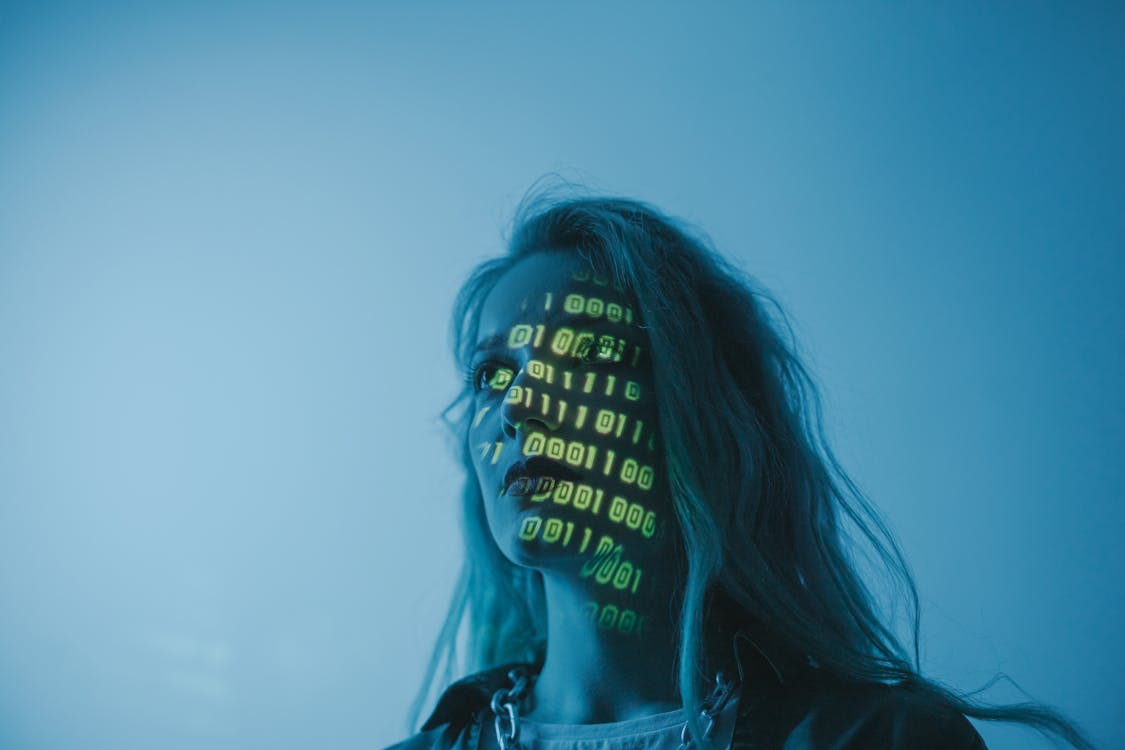Brooke Shields loves her Calvins. The late Jimmy Buffet was rarely seen without a margarita in hand. For decades, brands and marketing campaigns have relied upon celebrity endorsements to popularize their products. But what if the face of your product wasn’t a face at all but an AI-generated influencer? With the advent of Artificial Intelligence (AI) branding, companies have discovered that they can access fully written copy with the click of a button. Now, companies like Balmain and Fenty Beauty are using virtual, CGI-generated influencers as the face of their latest campaigns.
If you’re on the fence about using an AI-generated influencer for your business or ad campaign, don’t worry. We’re here to discuss the benefits and drawbacks of using virtual influencers.

What is a Virtual Influencer?
Virtual influencers are computer-generated avatars or animations that mirror people due to their realistic appearance and facial features. It could be helpful to consider them analogous to cartoons; they’re not real people. It’s not a robot trapped in a studio somewhere. Instead, a talented team of animators and designers will collaborate with you and your company to create the ideal avatar to represent your brand’s values and aesthetics. Together, you will create a social media presence for that ‘influencer’ on platforms such as Instagram.
For example, KFC recently tried its hand at using a virtual influencer by creating a computer-generated avatar of the beloved Colonel Sanders.
One of the most popular virtual influencers is Lil Miquela, whose Instagram bio describes her as:
A “19-year-old robot living in LA.” ‘Lil Miquela has over 2.7 million Instagram followers and has collaborated with brands like Samsung.
Another example where virtual influencers thrive is the music industry. Remember the hit song “Feel Good Inc” by the Gorillaz? Since the Gorillaz are cartoon characters, they could be considered the prototype for virtual influencers. For decades, pop music has found a way to incorporate virtual influencers into the music scene.

Hatsune Miku, an anime vocaloid character, has released music since 2007. Miku’s YouTube channel has over 2.5 million followers. Her voice is based on the Japanese singer and voice actor Saki Fujita. Miku sings via a Vocaloid software application, which uses Fujita’s voice. Japanese journalist Yuri Kageyama explains “The Vocaloid software application works on both Windows and Mac computers by taking inputs of melody and Japanese language lyrics and outputting the music with Miku as the vocalist.”
Fans can attend Miku’s concerts, where she is projected as a hologram and accompanied by a human orchestra.
Even with these examples, you may be wondering how this works. Simply put, virtual celebrities are the brainchild of brilliant teams of graphic designers, copywriters, and social media specialists. Brands can create virtual influencers by collaborating with graphic designers and animators to create a complex series of computer animations or images that mirror what a human influencer posts. When you garner revenue from the posts, you use that revenue to pay the team behind the influencer rather than the influencer themselves.
Start by collaborating with a team of designers to create a default character, and go from there. You must consult a motion graphics designer and use various reference photos to humanize your creation.

Together, you can decide what the virtual influencer likes, their personal style, and their values. The more characteristics you determine, the more concrete their personal “aesthetic” is and the more real they seem. For example, ‘Lil Miquela is known for her iconic space buns.
To learn more about the design process for a virtual influencer, feel free to check out this article from Peer2Peer Marketing, which breaks down the process step-by-step.
Now that we’ve determined what a virtual influencer is let’s move on to some of the benefits of utilizing a virtual influencer. Note: Utilizing virtual influencers doesn’t mean you have to forgo using human influencers altogether; it’s a relatively new and intriguing marketing tactic.
If you do decide to utilize a virtual influencer, transparency is key. You must state that the character is computer-generated in the post. For example 2018, Fenty accidentally reposted virtual influencer Shudu without knowing she was computer-generated.
Pros of Virtual Influencers:
You can go anywhere: Since all marketing campaigns and materials are generated digitally, you can go virtually anywhere in the world to “shoot” your next campaign.
No need for reshoots or sizing garments: Since the images are digital, if you find a mistake, you can fix it rather than going through the arduous process of reshooting. Virtual content simplifies the complex process of photography. There’s no need for shoots that go late into the night. No one needs to resize the garments.

You can tailor the influencer to your business: There’s no need to go through dozens of emails or casting calls when the ability to create a humanoid representative of your brand exists at your fingertips. Since the content is entirely virtual, that also means that the virtual influencer has no prior digital footprint, eschewing any past or future controversies.
Opportunities for collaboration: Creating a virtual influencer allows you to collaborate with a team of talented artists and animators you might not otherwise encounter professionally.
Cons for Virtual Influencers:
Potentially Misleading for your Client Base: Since virtual influencers are hyper-realistic, there’s also potential for you to accidentally mislead your client base into thinking they’re real people. As stated above, transparency about using computer-generated content is key. State that the influencer is computer-generated in their bio.
Promotes Unrealistic Beauty Standards: Since virtual influencers have pixels, not pores, there’s also the potential to promote and even amplify the unrealistic beauty standards perpetuated by the beauty industry.

Lacks Warmth and Empathy: Virtual content lacks the essential warmth and empathy that human-generated content provides. Virtually-generated posts may feel stilted or awkward. Plus, when you use an established human influencer, you also have access to the pre-established sense of trust the influencer built with their followers over time.
With virtually-generated content or influencers, it’s similarly hard to tell if the engagement from each post comes from bots or real people.
Conclusion:
Sometimes, the idea of a virtual influencer may seem uncanny, like something from a science fiction novel. But, if you collaborate with a team and remember to be transparent and upfront with your customer base, you may stumble upon a new and exciting way to market your product.



